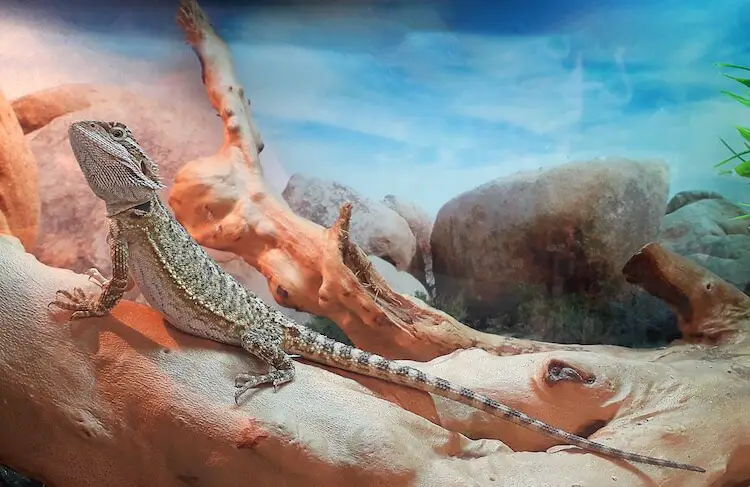

- #Adult bearded dragon hides how to#
- #Adult bearded dragon hides skin#
- #Adult bearded dragon hides full#

All live foods should be dusted with a calcium and multivitamin powder before being offered. Live foods for bearded dragons include crickets, woodies, black soldier fly larvae, mealworms (in moderation) and silkworms. Hatchling and juvenile dragons will generally consume more live food than vegetables with sub-adult and adult dragons consuming more vegetables. In captivity bearded dragons should be fed a variety of both live foods and fruits and vegetables. Bearded Dragon Dietīearded dragons are omnivores and feed on a range of live insects and plant matter.
#Adult bearded dragon hides full#
A full substrate change should be carried out every 2-3 months (depending on what substrate is used) and the enclosure thoroughly cleaned with a reptile-safe disinfectant.
#Adult bearded dragon hides skin#
Daily ‘spot checks’ should be carried out, sifting substrate to remove any faeces, shed skin or uneaten food. It is important to maintain high standards of cleanliness and hygiene within the dragon’s enclosure. They also require a ‘day and night’ cycle with heat and UV lights running for approximately 10-12 hours each day, set on a timer. Dragon’s should also have access to unfiltered, natural light at least once or twice a week. A 10-14% T5 UVB tube must be used as a source of artificial UV lighting in the dragon’s enclosure. Ultraviolet light (UV) plays an important role in a dragon’s growth and development. Carbon fibre and ceramic heat emitters are suitable for night-time heating. Recommended sources of day heat include incandescent, halogen and mercury vapour globes along with a heat mat as a secondary source of heating. Temperatures should be monitored daily and must be regulated with the use of a good quality thermostat. The cool end of the enclosure should be maintained between 24-26˚C and should not drop below 18-21˚C at night. They should have access to an elevated piece of timber or rock ornament to allow them to bask within 30cm of the heat source. Bearded dragons require a hot basking spot maintained between 38-42˚C. Providing adequate temperature gradients within a dragon’s enclosure is essential for their health and wellbeing. Bearded Dragon Careīearded dragons have very specific set of requirements in regards to general care, however if all of these elements are provided they thrive in captivity. An absorbent substrate is also important such as a fine-grade reptile safe desert sand. The enclosure can be furnished with basking logs and rocks, a background, artificial plants and water and feed dishes. It is important that the enclosure has sufficient ventilation as well as a secure, lockable door.

Dragons are solitary animals and should be housed on their own, otherwise you will face dominance and aggression issues between dragons.įor one pygmy bearded dragon, a glass or timber enclosure of at least 90x45圆0cm is recommended, however a central bearded dragon will require an enclosure of 120x45圆0cm. How easy is it to look after a Bearded Dragon? They are a medium maintenance pet Bearded Dragon Housingīearded dragons are active, sun-loving reptiles that spend considerable time basking each day. What does a Bearded Dragon eat? - Live insects, vegetables and pellets What size of tank is recommended for my Bearded Dragon? 90x45圆0cm (Pygmy), 120x45圆0cm (Central) How big will my Bearded Dragon grow? They will grow 20-25cm (Pygmy) 40-60cm (Central) How long will my Bearded Dragon live? They can live from 10 - 15 years
#Adult bearded dragon hides how to#
This comprehensive care guide will show you how to look after a Bearded Dragon in 3 easy steps Fast Facts:


 0 kommentar(er)
0 kommentar(er)
